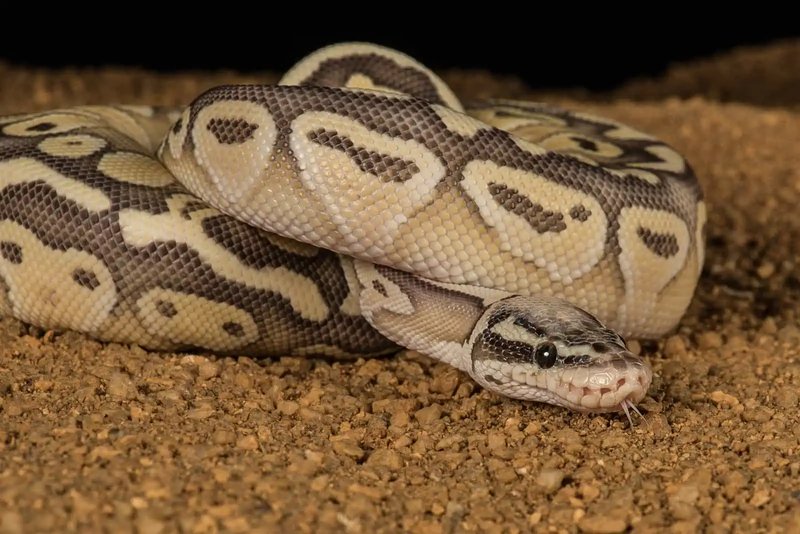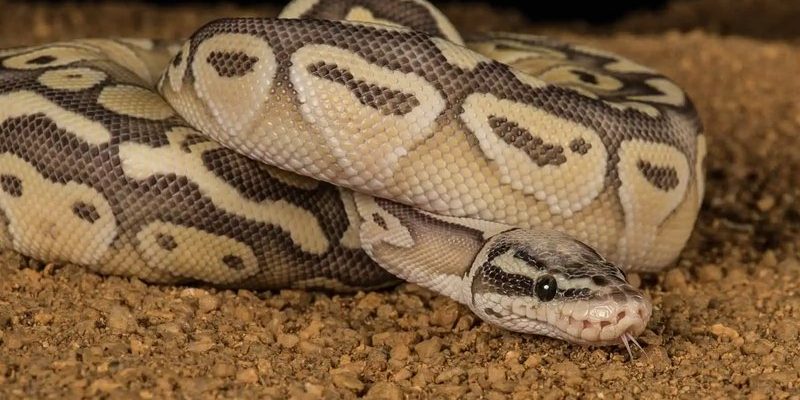
Let’s dive into the ins and outs of housing ball pythons together. While they’re generally solitary animals in the wild, understanding their behavior and needs can help you make the right decision. With the right setup and knowledge, you might find a way to keep multiple ball pythons without any issues. So grab your favorite drink, and let’s sort through the details!
Understanding Ball Python Behavior
Before we talk about whether ball pythons can live together, it’s essential to understand their natural instincts. Ball pythons are known for their calm demeanor, but they are also territorial. In the wild, they prefer to stake their claim in a cozy burrow or hideaway. Imagine a comfy blanket fort—that’s their safe space. If you throw another snake into this mix, it might feel cramped or threatened.
Here’s the thing: ball pythons can be social when they’re young, but as they mature, their territorial instincts kick in. It’s crucial to recognize that their personalities can vary widely. Some might tolerate a cage mate, while others could become stressed or aggressive. Watching how your snakes behave is a good way to gauge whether they’ll get along.
A lot of people make the mistake of thinking that just because snakes are not aggressive by nature, they can’t fight. However, a stressed snake can lead to health problems and even injuries. Always consider their natural behaviors when deciding on housing.
Separate Housing is the Safest Option
If you’re thinking about keeping more than one ball python, the safest option is often to house them separately. You might be wondering why separating them is so critical. Well, here’s a simple breakdown of the reasons:
- Reduced Stress: Keeping them in separate enclosures helps them feel secure. Each snake has its own space, which reduces stress and aggression.
- Health Monitoring: When housed separately, it’s easier to keep an eye on their health. You can quickly spot any signs of illness or injury and address them.
- Feeding Issues: Feeding two snakes in the same space could lead to competition. One might dominate the food, leaving the other hungry, which can lead to significant health issues.
If you’re really set on housing them together, consider doing so only during specific circumstances, like breeding. Even then, it’s essential to monitor them closely and be prepared to separate them at the first sign of trouble.
Setting Up Separate Enclosures
Creating a comfortable environment is key to your ball python’s well-being. Each enclosure should mimic their natural habitat as closely as possible. Here are some essential guidelines for setting up their homes:
- Size: Aim for at least a 40-gallon tank for each adult ball python. Juveniles can start in smaller setups, but they will need upgrades as they grow.
- Temperature: Maintain a temperature gradient. This means one side should be warm (around 80-85°F) and the other cooler (75-80°F) to allow your snake to regulate its body temperature.
- Hides: Include at least two hiding spots. One on the warm side and one on the cool side ensures they have places to retreat and feel safe.
- Humidity: Keep humidity levels between 50-60%. This helps prevent shedding problems and keeps your ball python hydrated.
By ensuring each snake has its own well-maintained habitat, you promote their health and happiness. Plus, you can enjoy watching their unique behaviors without the worry of them fighting.
Signs of Stress in Ball Pythons
Even with the best setups, sometimes snakes just don’t get along. It’s important to know the signs of stress to keep your ball pythons healthy. Some common indicators include:
- Hiding More: If your snake is spending excessive time hiding, it might be feeling anxious.
- Aggressive Behavior: Hissing, striking, or constant coiling can signal that your snake feels threatened.
- Refusal to Eat: If your ball python isn’t eating or shows a sudden change in its feeding habits, it might be stressed.
Don’t forget your ball pythons can’t verbally communicate what they feel, so being observant is key. If you notice any of these stress signs, it may be time to either separate them or reevaluate their living conditions.
What About Breeding?
If you’re considering housing ball pythons together for breeding purposes, be sure you know what you’re getting into. Breeding can be complex, requiring understanding of both the species’ behaviors and the potential risks involved.
Here are some things to consider:
- Timing: Introduce male and female ball pythons only during the breeding season and separate them afterward to prevent stress.
- Health Checks: Ensure both snakes are healthy and free of parasites or diseases to protect the offspring.
- Monitoring: Always watch the snakes closely when they’re together. If there seems to be aggression or excessive stress, separate them immediately.
Breeding can be rewarding, but it’s essential to do it responsibly. Don’t rush into it unless you’re fully prepared and knowledgeable about the process.
In the end, while ball pythons can theoretically live together, it’s generally best to keep them apart. Each snake thrives in its own space, where it can feel safe and comfortable. By creating appropriate, individual habitats, you can ensure a peaceful, healthy environment for your pets.
Remember, keeping ball pythons should be a fulfilling experience where you get to observe their fascinating behaviors and personalities. And while they might not be the best roommates, with a little understanding and effort, you can provide them with the best care possible. So, whether you have one ball python or many, just make sure they have their own cozy corners to call home!

